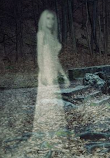Almost everyone is familiar with near-death experiences (NDEs), in which people momentarily die (or come close to dying) and then, upon regaining consciousness, describe having had experiences such as floating out of their bodies, seeing the whole scene from up above, going into a tunnel where they met deceased loved ones, seeing a review of the events of their life, and even entering a beautiful, light-filled realm where they met God. Surveys indicate that somewhere between 4 and 15% of the general population has had a near-death experience, and among those who have survived cardiac arrest, more than one study has found the proportion of those experiencing an NDE to be as high as 23%. While attempts to explain NDEs without appeal to survival of bodily death abound, none of these purported explanations is able to account for all of the characteristics of these experiences.
Verified Perception During Cessation of Brain Function
One of the most common skeptical explanations for near-death experiences is that they are the mere hallucinations of a dying brain. That is, (1) the body of the person having the near-death experience is not actually dead during the experience, just dying, and (2) their experience is just a hallucination created by the brain in this extreme state. One of the most important pieces of evidence that refutes this explanation is the existence of cases where NDErs report seeing or hearing events that can be verified to have taken place while they were in cardiac arrest and without brain function.
Titus Rivas, Anny Dirven, and Rudolf H. Smit have collected a number of cases of verified paranormal perception during NDEs in their 2016 book The Self Does Not Die, and they devote an entire chapter to cases of awareness and perception during cardiac arrest. One example involves a man who was found “unconscious, stone cold, and apparently clinically dead out in a meadow.” Medics tried to resuscitate him on the way to the hospital but were unsuccessful. On arrival at the hospital, his body was “ashen gray, with livor mortis (in which blue-black discoloration occurs where blood pools in the lowest areas of the corpse) and blue lips and nails.” He had no blood circulation and no heart rhythm. Rivas, Dirven, and Smit emphasize that activity in the cortex of the brain ceases about 15 seconds after cardiac arrest, eliminating the possibility of any complex conscious experience. By the time this man was brought into the hospital, he had been in cardiac arrest for a great deal longer than 15 seconds. At the hospital, a nurse removed the man’s dentures before continuing resuscitation efforts. It then took an additional hour for those resuscitation efforts to be effective enough for the patient to be transmitted to the ICU. About a week later, the patient spoke to the nurse who had removed his dentures and said that he had watched the nurse remove them. Not only that, but he said he’d seen the nurse put them on the pull-out shelf of a cart that had lots of bottles on it. The nurse confirmed this was what he had done: he’d put the man’s dentures on the pull-out shelf of the crash cart.
In another case, exceptionally well-documented, a woman named Pamela Reynolds was undergoing surgery for a brain aneurysm when she had an NDE. Throughout the procedure, Reynolds was under anesthetic, had her eyes taped shut, and had loud clicks and white noise playing in her ears through earbuds, but she nevertheless found herself able to perceive events going on in the room around her. Reynolds experienced herself as floating above her body and over the surgeon’s shoulder, and she was later able to accurately describe the specific type of saw used by the surgeon as well as the case that contained its interchangeable blades. She also reported hearing someone remark that the arteries in her right groin were too small and then someone else suggest the left groin. She was surprised by this conversation as she hadn’t known that her brain operation would involve draining the blood from her body through her groin.
Nevertheless, the exchange she described had taken place, even though multiple persons who had been present in the operating room at the time confirmed that there should have been no way for her to perceive these things. Interestingly, Reynolds never reported hearing the loud clicks that were playing directly into her ears at the volume of a lawn mower or a subway train going through a station. That is, her perceptions of sound did not seem bound to what was being received by her ears.
Now, the verified perceptions just described occurred in an early stage of Reynolds’ surgery. What is even more impressive than this is what she experienced near the end of the procedure, because by that time, not only was she completely anesthetized, but her body had been cooled to a severely hypothermic temperature, her heart and breathing had been stopped, and blood was drained from her head. It was during this part of the procedure that Reynolds reported perceiving two more things she shouldn’t have been able to. The first was that the operating room staff was listening to the song “Hotel California,” and the other was that they “shocked” her twice while restarting her heart. One of the neurosurgeons in attendance confirmed that the staff had indeed listened to “Hotel California” and that her heart had to be restarted twice. This is not a number that could have been easily predicted, as the number of necessary attempts varies.
Some might argue that perceptions like those of the dentures and of Reynolds’ resuscitation efforts could be obtained by the NDEr after resuscitation, by using psi to look into the past and see what happened while they were unconscious. However, it’s hard to see any independent motivation for this hypothesis, beyond the desire to cling to the notion of brain-dependent consciousness at all costs. Furthermore, if time is no barrier to our capacity for psi, this implies that our consciousness can transcend time, and in that case, it’s not clear that the concept of death—of our being alive at one time and dead at another—is even coherent. If we can access the past psychically, then there is an important sense in which survival necessarily exists, as the “past” consciousness of our loved ones is still accessible to us in the present.
Sharon Hewitt Rawlette has a PhD in philosophy from New York University and writes about consciousness, parapsychology, and spirituality for both academic and popular audiences. She lives in rural Virginia. She received an award from the Bigelow Institute for Consciousness Studies for her essay “Beyond Death: The Best Evidence for the Survival of Human Consciousness,” available at https://bigelowinstitute.org/contest_winners3.php. Footnotes in the essay are not included in these excerpts.










